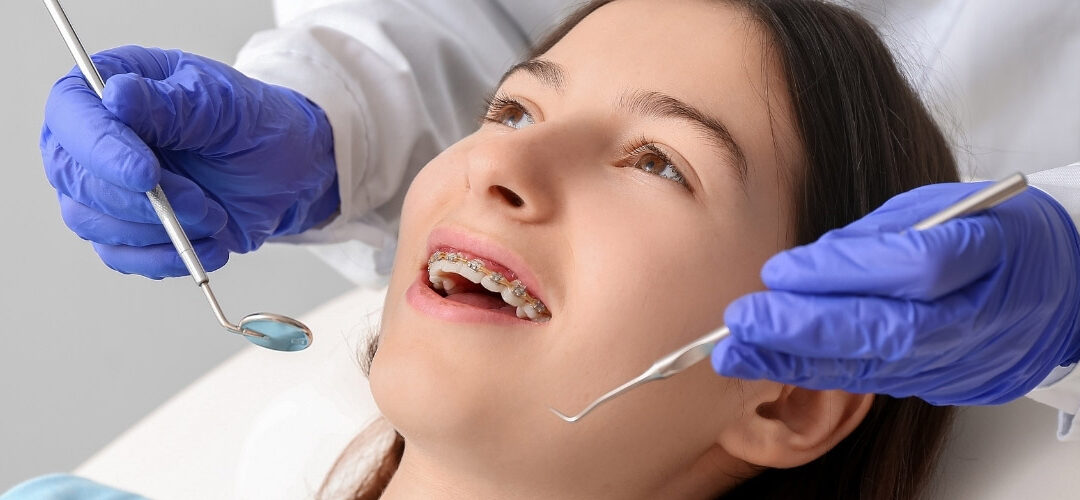Your Overview to Cumming Invisalign: Straightening Teeth with Style and Comfort
Your Overview to Cumming Invisalign: Straightening Teeth with Style and Comfort
Blog Article
Comprehensive Overview to Orthodontics Treatments for Dealing With Oral Imbalances
Comprehending the intricacies of each procedure, including their systems, benefits, and possible disadvantages, is vital in making informed choices about one's orthodontic therapy. As we browse with the detailed guide to orthodontic treatments for correcting dental imbalances, the detailed information of each approach will unravel, losing light on the path toward a unified and useful oral alignment.
Orthodontic Procedures Summary

In enhancement to conventional dental braces and clear aligners, orthodontists may likewise suggest various other interventions like headwear, palatal expanders, or retainers to address details alignment concerns (braces). These procedures are tailored to every individual's one-of-a-kind needs and might involve a mix of treatments to achieve the preferred results. Normal modifications and tracking are critical components of orthodontic therapy to ensure progression gets on track and to make any required alterations along the road. By undergoing orthodontic procedures, patients can not only attain a straighter grin but also improve their overall oral health and function.
Typical Braces: How They Function
When thinking about orthodontic therapies for dental misalignments, typical braces stick out as a tried and true method for remedying teeth placing. Traditional dental braces consist of braces, wires, and bands that function together to apply continual stress on the teeth, progressively relocating them right into the wanted placement. The braces are connected to the teeth utilizing a special adhesive, and the wires are threaded through the braces. By adjusting the stress of the wires, orthodontists can regulate the direction and force related to each tooth, leading them into appropriate placement in time.
One secret element of just how typical dental braces job is the procedure of bone makeover. As pressure is related to the teeth through the braces, the bone surrounding the teeth is reshaped to support the brand-new tooth settings. This improvement is essential for the lasting stability of the dealt with alignment. Individuals will certainly require routine modifications at the orthodontist's workplace to make certain the dental braces proceed to apply the right pressure for efficient teeth activity.
Unseen Aligners: Disadvantages and pros
These clear, personalized trays are practically unnoticeable when put on, making them an attractive alternative for individuals looking for an extra aesthetically pleasing orthodontic treatment. Clients can eliminate the aligners before eating or brushing their teeth, reducing the risk of food obtaining stuck in the home appliance and simplifying the cleaning procedure.

Surgical Orthodontic Options
Surgical treatments in orthodontics present viable alternatives for addressing intricate oral misalignments that might not be successfully fixed through emergency extraction near me traditional orthodontic therapies. While standard dental braces and undetectable aligners can deal with numerous orthodontic concerns, specific cases require medical intervention to attain optimal outcomes. Surgical orthodontic options are normally advised for severe malocclusions, significant jaw inconsistencies, and situations where the underlying bone structure needs adjustment to achieve correct alignment.
One typical medical orthodontic treatment is orthognathic surgical treatment, which entails rearranging the jaws to fix functional issues such as difficulty talking or eating. This surgery is frequently done in partnership with an orthodontist that aids straighten the teeth before and after the treatment. Surgical orthodontics might also entail procedures to reveal impacted teeth, get rid of excess periodontal tissue, or reshape the jawbone to create a much more harmonious facial profile.
Prior to taking into consideration medical orthodontic options, patients undergo a comprehensive examination to figure out the necessity and possible advantages of such treatments. cumming invisalign. While surgical procedure may seem complicated, it can substantially enhance both the feature and looks of the smile in situations where standard orthodontic treatments fail
Retainers and Post-Treatment Treatment

Post-treatment treatment involves complying with the orthodontist's directions diligently. This may include proper oral hygiene techniques, attending follow-up consultations, and using the retainers as suggested. Failure to adhere to post-treatment care guidelines can cause relapse, where the teeth progressively move back towards their initial positions. Consistent retainer wear, great oral hygiene, and normal dental exams are vital for maintaining the results achieved via orthodontic surgical procedure and making certain the long-term stability of the fixed dental placement.
Verdict
In verdict, orthodontic treatments supply different choices for remedying oral imbalances. Surgical orthodontic alternatives are offered for much more severe misalignments. Overall, orthodontic procedures can efficiently boost dental health and wellness and aesthetic look.
As we navigate through the detailed guide to orthodontic procedures for dealing with oral misalignments, the elaborate information of each method will certainly unfold, dropping light on the path towards a harmonious and useful oral placement. - cumming orthodontist
One of the most usual orthodontic therapies is the usage of dental braces, which are composed of steel braces and wires that apply mild pressure to progressively move teeth into the preferred position.When considering orthodontic treatments for oral misalignments, typical dental braces stand out as a tried and true approach for correcting teeth placing. Furthermore, unnoticeable aligners might not be ideal for complex orthodontic problems that call for even more significant teeth activity, as they are commonly advised for mild to modest situations. Retainers are customized orthodontic devices created to hold teeth in their remedied settings after the completion of orthodontic therapy.
Report this page